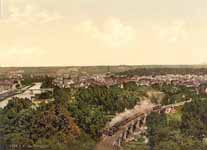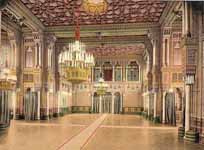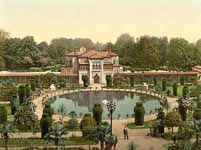.



Bad Cannstatt, Stuttgart
Bad Cannstatt: home to Europe's second largest mineral spas,[12] (second only to the ones in Buda, Hungary), the Cannstatter Wasen (site of the Stuttgart Spring Festival and the Cannstatter Volksfest (the world's second largest beer festival, every September/October)), Wilhelma zoo and botanical garden, the Schleyer-Halle, the Porsche Arena, the Mercedes-Benz Museum, the VfB Stuttgart Bundesliga football team and their home ground, the Mercedes-Benz Arena, and adjacent to it the Robert Schlienz Stadium. The greenhouse of Gottlieb Daimler, where he developed his cars, motorcycles and motorboats can also be found in Cannstatt, as well as the oldest remaining residential building in Stuttgart, the Klösterle ("little monastery", a Beguin residence erected in 1463). The largest city district of Stuttgart, Cannstatt was suggested as the future capital of Württemberg by Gottfried Leibniz in 1696.[citation needed] Cannstatt is also famous for the Pleistocene mammals preserved in the local travertine deposited by the mineral springs, some of which are on exhibit at the State Museum of Natural History Stuttgart. The leading German chocolate brand Ritter Sport was first produced in Cannstatt. In 1930 the company was relocated to Waldenbuch.
From Wikipedia, All text is available under the terms of the GNU Free Documentation License

